Arid Climate: [Characteristics, Flora, Fauna and Adaptability]
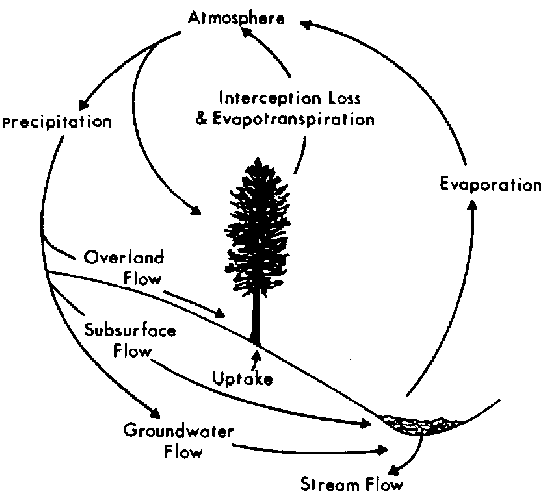
Important points about the Arid Climate:
- What is? The arid climate is a type of climate that is generated in dry environments, where humidity is practically nil.
- Where it is located? The arid climate is distributed in several areas of the planet, but most of these are found in the limits of the tropics.
- What flora predominates? Trees and food -producing species are not frequent, rather they are found in a certain amount of thickets and sparse bushes.
- What fauna predominates? Mammals are minimal, with only a few mice, foxes and dromedaries, as well as camels. Other animals are usually vultures, birds of prey, lizards and snakes.
- How long is the day and night? During the summer period, the days are longer than the nights, which tend to be longer when winter arrives.
- Can humans live in this climate? Due to the climatic characteristics and the lack of appropriate conditions for self-sustenance, human populations are very limited in the arid climate.
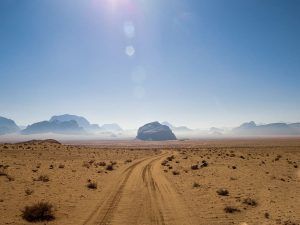 The arid climate is characterized by a minimum amount of annual rainfall, so both its vegetation and its fauna are very limited.
The arid climate is characterized by a minimum amount of annual rainfall, so both its vegetation and its fauna are very limited.
It does not have differentiated seasons and the range of climatic variability is minimal, especially showing differences between day and night.
It is a predominantly dry climate, which occurs in deserts, although there are some cold arid areas. Do you want to learn more about everything that encompasses the arid climate? You have come to the right place because next we are going to review data about him.
What is arid climate?
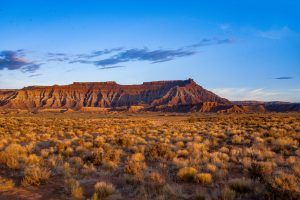 The arid climate is a type of climate that is generated in dry environments, where humidity is practically nil.
The arid climate is a type of climate that is generated in dry environments, where humidity is practically nil.
Its level of rainfall is low, which makes the environment undesirable for the largest number of species of plants, animals and even humans.
Temperatures are strongly influenced by location, as the arid climate is very close to the tropics. The arid climate is the one that occupies the most surface in the whole earth, covering an approximate of 72%.
Where is the arid climate located geographically?
The arid climate is distributed in several areas of the planet, but most of these are found in the limits of the tropics. Among these we can mention:
- The eastern part of North America where we find wide desert spaces, such as the Chihuahua desert in Texas.
- In the southern part of South America, such as in the Atacama desert in Chile.
- In a good part of the territory of Australia, especially towards the north side.
- In Central Africa with the largest area in the world that is the Sahara desert.
- A major extension of Asia.
What characteristics does an arid climate have?
That it is a dry and predominantly hot climate does not define everything that could be said about the arid climate, so we better see its main characteristics:
- Precipitation: almost non-existent, with an average of less than 300 millimeters per year. An interesting phenomenon occurs here that produces greater aridity in the soils because the high temperatures of the day generate evaporation that tends to be in greater quantity than the recorded rainfall. Therefore, the ground cracks when it is not protected (it does not happen when there are dunes).
- Temperatures: they are constant throughout the year, but differentiated in terms of what happens during the day and at night. In hot aggregates, the average temperature can range from 18 to 25º C, while in cold aggregates it is possible to reach -30º C.
- Types: Although the largest number of arid climates are located in warm spaces, there are also areas with cold arid climates that are characterized by dry environments and sub-zero temperatures. These areas are known as steppes.
- Winds: they are present and can form natural events such as small sand cyclones in deserts. Sometimes they can be very strong and hinder the movement of the species that live there.
What flora predominates in the arid climate?
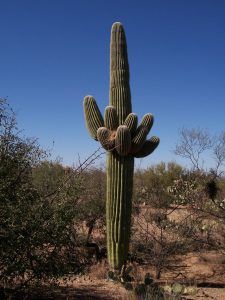 The flora of the arid climate is very limited by the adverse conditions that prevail in the environment, so they have developed their own protection system.
The flora of the arid climate is very limited by the adverse conditions that prevail in the environment, so they have developed their own protection system.
This is characterized by thick leaves with a gelatinous texture inside, as is the case with cacti. Also, many of them have spines.
Trees and food-producing species are not frequent, rather they are found in a certain amount of thickets and sparse bushes.
Palm trees are plants that need humidity and take a lot of sun, so it is possible to find them in deserts in areas close to oases.
What fauna predominates in the arid climate?
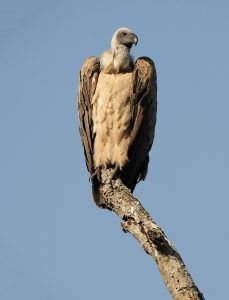 As is logical, the fauna is also very limited due to the scarcity of water necessary to live.
As is logical, the fauna is also very limited due to the scarcity of water necessary to live.
The most characteristic species of this climate is the camel, which is capable of storing water inside its body and using it as needed.
It is common, however, to find some types of insects such as scorpions, beetles, different types of arachnids, etc.
Mammals are minimal, with only a few mice, foxes and dromedaries, as well as camels. Other animals are usually vultures, ants, birds of prey, lizards and snakes.
How long is the day and night in the arid climate?
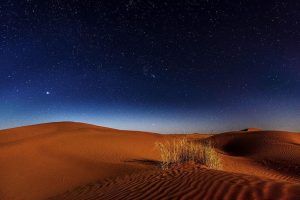 The duration of the day and night is not so much influenced by the climate as by the incidence of the sun’s rays according to the movement of translation.
The duration of the day and night is not so much influenced by the climate as by the incidence of the sun’s rays according to the movement of translation.
This implies that during the summer period, the days are longer than the nights that are usually extended when winter arrives.
Due to its conditions, the time of the stations is not usually so differentiated and in any case the variability of the schedule does not create an important impact either.
What is striking about this climate is the variation between day and night temperatures because they tend to be very opposite, with hot days and cold nights.
Can humans live in the arid climate?
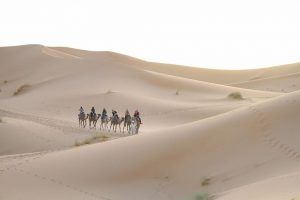 Due to the climatic characteristics and the lack of appropriate conditions for self-sustenance, human populations are very limited in the arid climate.
Due to the climatic characteristics and the lack of appropriate conditions for self-sustenance, human populations are very limited in the arid climate.
There are some communities of few members that live in the Sahara desert, but they have not been able to expand due to the lack of life resources.
In contrast, in cold arid climates, the opposite effect occurs because human life is unlikely due to very cold temperatures. But, in the same way, access to the fruits of the land or to hunting or fishing animals is quite limited.
The arid climate is very representative in the world and, the reality, is that it is not very attractive for human life. However, it is part of the ecological balance of the world and, at a tourist level, it is interesting to know and live the experience of the movements of dunes and the presence of oases.
Have you ever had a chance to explore it? If the answer is yes, do not hesitate to leave us a comment below. We read you!
Bibliographic references
- Bioclimatic Effect of Afforestation in Urban Areas with Arid Climate, A Kurbán, A Papparelli, M Cúnsulo… – Advances in energies…, 2006 – sedici.unlp.edu.ar
- Influence of urban morphology on external thermal habitability in a city with an arid climate, MBS Castro, É Correa, MA Cantón – Habitat Sustentable, 2017 – dialnet.unirioja.es
- Sedimentological characterization of a Distributive Fluvial System with an arid climate: Papagayos stream, in the eastern foothills of Sierras La Huerta…, P Santi Malnis, CE Colombi, N Rodríguez Posatini… – Andean…, 2018 – scielo.conicyt.cl
- Thermal conditions of an urban green space in an arid climate, V Ripoll, A Kurbán, A Papparelli… – Advances in Energies…, 2010 – sedici.unlp.edu.ar
- Relationship between episodes of intense rain and damage caused by floods in coastal tourist areas with an arid climate: the South of Tenerife (1980-2018), J DÍaz-Pacheco, A Yanes, A López-Díez … – X Jornadas de …, 2019 – researchgate.net
- Temperature and thermal comfort ranges in low-cost housing in dry arid climate, LH Sosa – Sustainable Habitat, 2013 – revista.ubiobio.cl
- Water evaluation of green roofs for use in bioclimatic architecture in Mediterranean areas with arid and semi- arid climates, JL Montero, MCS Sanjuán, JG Díaz… – VII Congreso Ibérico…, 2014 – dialnet.unirioja.es
- Effectiveness of strategies to reduce urban heating. Study for a city with an arid climate, MB Sosa, E Correa, MA Cantón – Reports of the …, 2020 – ….revistas.csic.es
Maybe you are also interested in:
- Koppen climate classification: [Concept, Characteristics and Types of Climates]
- Alpine Climate: [Characteristics, Flora, Fauna and Adaptability]
- Temperate Continental Climate: [Characteristics, Flora, Fauna and Adaptability]
- Continental Climate: [Characteristics, Flora, Fauna and Adaptability]
- High Mountain Climate: [Characteristics, Flora, Fauna and Adaptability]
- Climate of Argentina: [Characteristics, Flora, Fauna and Adaptability]
- Australia Climate: [Characteristics, Flora, Fauna and Adaptability]
- California Climate: [Characteristics, Flora, Fauna and Adaptability]
- Climate of Europe: [Characteristics, Flora, Fauna and Adaptability]
- Tundra Climate: [Characteristics, Flora, Fauna and Adaptability]
- Equatorial Climate: [Characteristics, Flora, Fauna and Adaptability]
- Cold Climate: [Characteristics, Flora, Fauna and Adaptability]
- Cold Weather: [Characteristics, Flora, Fauna and Adaptability]
- Mediterranean Climate: [Characteristics, Flora, Fauna and Adaptability]
- Ocean Climate: [Characteristics, Flora, Fauna and Adaptability]
- Polar Climate: [Characteristics, Flora, Fauna and Adaptability]
- Subpolar Climate: [Characteristics, Flora, Fauna and Adaptability]
- Subtropical Climate: [Characteristics, Flora, Fauna and Adaptability]
- Subhumid Temperate Climate: [Characteristics, Flora, Fauna and Adaptability]
- Temperate Climate: [Characteristics, Flora, Fauna and Adaptability]
- Humid Tropical Climate: [Characteristics, Flora, Fauna and Adaptability]
- Dry Tropical Climate: [Characteristics, Flora, Fauna and Adaptability]




![Photo of Jupiter Tree: [Cultivation, Irrigation, Care, Pests and Diseases]](https://www.complete-gardening.com/wp-content/uploads/2022/08/jupiter-tree-cultivation-irrigation-care-pests-and-diseases-390x220.jpg)